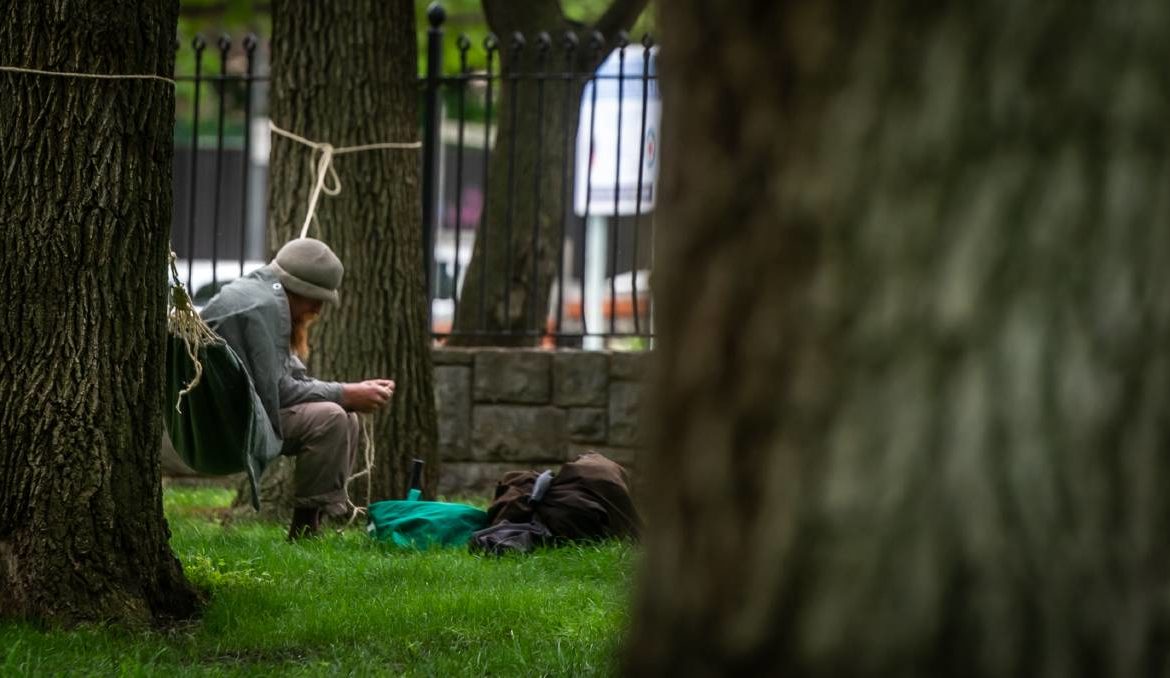news, latest-news,
Canberrans don’t often seek support from homelessness support services until they find themselves without a home. But those at risk of homelessness are more likely to receive accommodation than those already homeless. More than half – 54 per cent – of people who presented to ACT support services in 2019-20 were homeless on their first presentation, compared with 43 per cent nationally. As well, a higher proportion of Canberrans needed accommodation at 81 per cent, compared with 59 per cent nationally. The figures were outlined in the specialist homelessness services annual report from the Australian Institute of Health and Welfare. It found Canberrans at risk of homelessness were more likely to be assisted into housing at 89 per cent than those who were already homeless at 46 per cent. The overall proportion of clients who received accommodation in the ACT was 37 per cent. This was higher than the national figure of 30 per cent. Of those who sought support, 55 per cent were women and 16 per cent were Indigenous. People who presented were most likely to live alone at 41 per cent, followed by single parents at 37 per cent. One in 103 people in the ACT received homelessness assistance, compared to one in 87 nationally. IN OTHER NEWS: The report is based off data from specialist support service agencies, which are those that receive government funding to deliver accommodation or support to people who are homeless or at risk of homelessness. Homelessness Australia chair Jenny Smith said the report showed more than two-thirds of people who needed help but were turned away were women or girls. “There is no doubt that 2020 has been a difficult time for those doing it tough, especially women,” she said. “Demand for homelessness services continually exceeds capacity, with there being inadequate access to both accommodation and support staff to respond to the enormous need. “In 2019-20, every day, 260 people seeking support missed out. Over two-thirds, or 67 per cent, of this group who missed out on help were women or girls.”
/images/transform/v1/crop/frm/fdcx/doc7cyorr8xkhd1nicfmkgv.jpg/r23_0_2630_1473_w1200_h678_fmax.jpg
Canberrans don’t often seek support from homelessness support services until they find themselves without a home.
But those at risk of homelessness are more likely to receive accommodation than those already homeless.
More than half – 54 per cent – of people who presented to ACT support services in 2019-20 were homeless on their first presentation, compared with 43 per cent nationally.
As well, a higher proportion of Canberrans needed accommodation at 81 per cent, compared with 59 per cent nationally.
The figures were outlined in the specialist homelessness services annual report from the Australian Institute of Health and Welfare.
It found Canberrans at risk of homelessness were more likely to be assisted into housing at 89 per cent than those who were already homeless at 46 per cent.
The overall proportion of clients who received accommodation in the ACT was 37 per cent. This was higher than the national figure of 30 per cent.
Of those who sought support, 55 per cent were women and 16 per cent were Indigenous.
People who presented were most likely to live alone at 41 per cent, followed by single parents at 37 per cent.
One in 103 people in the ACT received homelessness assistance, compared to one in 87 nationally.
The report is based off data from specialist support service agencies, which are those that receive government funding to deliver accommodation or support to people who are homeless or at risk of homelessness.
Homelessness Australia chair Jenny Smith said the report showed more than two-thirds of people who needed help but were turned away were women or girls.
“There is no doubt that 2020 has been a difficult time for those doing it tough, especially women,” she said.
“Demand for homelessness services continually exceeds capacity, with there being inadequate access to both accommodation and support staff to respond to the enormous need.
“In 2019-20, every day, 260 people seeking support missed out. Over two-thirds, or 67 per cent, of this group who missed out on help were women or girls.”







